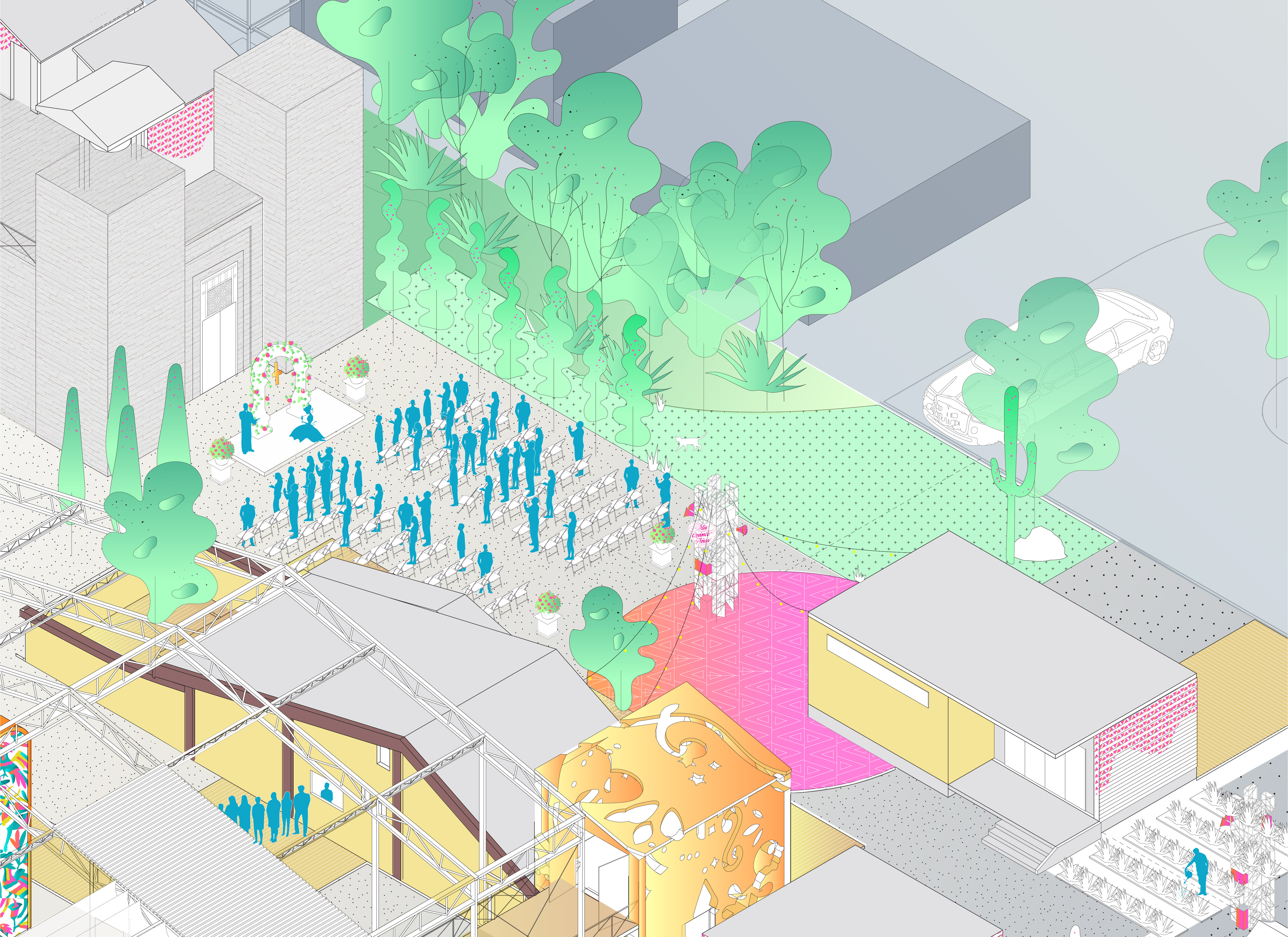Projects
Parque Sonar
Collaborator: Harsheen Kaur
Mexico City has a long history of music being used to get people together. From it’s rock and roll movement to it’s punk discos, these genres are very much alive in the underground hipster and populous ways. This project believes that music and sound can blur the differences in class, and architecture can offer a radical mixity of programs, people, and places. Parque Sonar imagines a new cultural center that acts as a sound playground for new genres of music to be formed by crazed experimentation. This is achieved by preserving the intangible heritage of the site, creating porosity in section and plan, providing heterogenous and juxtaposed programs, and supporting informalism that is achieved by appropriation.
Music and sound are used as social connectors to strengthen the connection between the existing emergent program in the community and the last remaining body of water in Mexico City.
The vernacular architecture on the site with a diverse set of emergent programs is preserved but enhanced by introducing juxtaposed programs and spaces.. The Canal Nacional is one of the few remaining bodies of water in the metropolis of Mexico City. Over the years the canal has become a magnet for trash and algae growth and was threatened to be covered up with a road. The local community in Iztapalapa has taken measures to restore the canal to its former glory.
Mexico City has a long history of music being used to get people together. From it’s rock and roll movement to it’s punk discos, these genres are very much alive in the underground hipster and populous ways. This project believes that music and sound can blur the differences in class, and architecture can offer a radical mixity of programs, people, and places. Parque Sonar imagines a new cultural center that acts as a sound playground for new genres of music to be formed by crazed experimentation. This is achieved by preserving the intangible heritage of the site, creating porosity in section and plan, providing heterogenous and juxtaposed programs, and supporting informalism that is achieved by appropriation.
Music and sound are used as social connectors to strengthen the connection between the existing emergent program in the community and the last remaining body of water in Mexico City.
The vernacular architecture on the site with a diverse set of emergent programs is preserved but enhanced by introducing juxtaposed programs and spaces.. The Canal Nacional is one of the few remaining bodies of water in the metropolis of Mexico City. Over the years the canal has become a magnet for trash and algae growth and was threatened to be covered up with a road. The local community in Iztapalapa has taken measures to restore the canal to its former glory.





